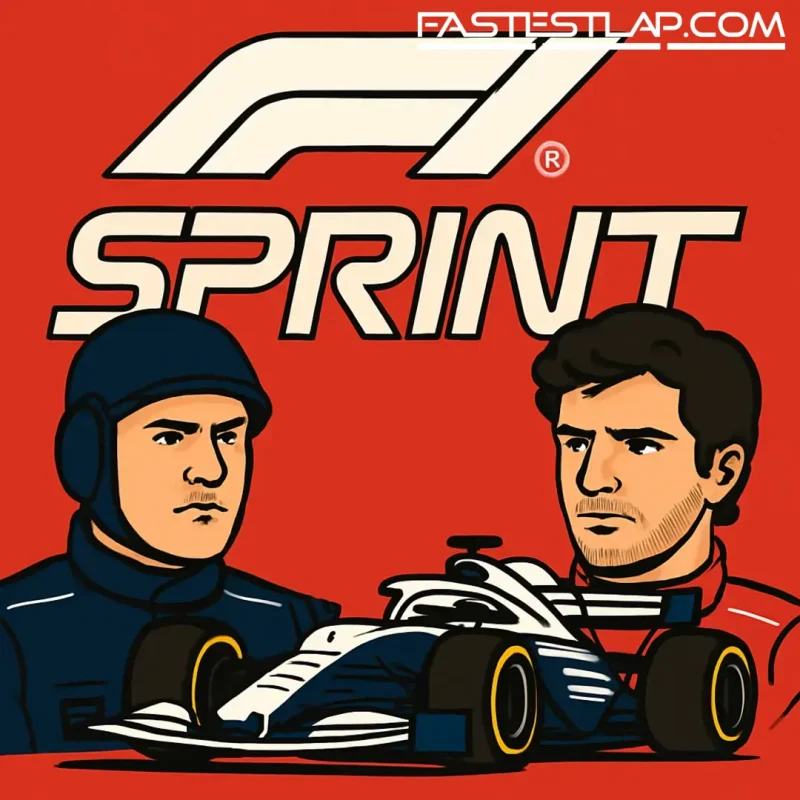2026 Sprint slate set — and the rookie alarm bells are ringing
Formula 1 has locked in its 2026 Sprint venues, and with that, the sport’s simmering format debate just got a fresh burst of heat. The Sprint experiment that began in 2021 with three Saturday dashes has steadily grown into a fixture — six per season now — and the paddock is bracing for the next push: talk of as many as 12 Sprints in a single year.
That’s half the calendar. More action for fans, yes. More pressure on teams and drivers, definitely. And if you’re a rookie, it might be a problem.
Sauber’s 2025 newcomer Gabriel Bortoleto didn’t mince words when the topic came up over the Azerbaijan Grand Prix weekend. He likes the current rhythm — three practice sessions to chip away at set-up, confidence and detail — and he knows exactly what disappears when a Sprint weekend rolls in.
“On Sprint weekends, everything is compressed,” he said. “You have to make calls quickly, and you don’t always maximise the car in time.” He gets the entertainment value — “more racing, more meaningful sessions” — but he also drew a line. Pushing the calendar to a dozen Sprints? “That’s a hard limit for me.”
The hypothetical that really made him wince: a Sprint in Singapore. He laughed, then shot straight. “Then they have a problem! I’m not a rookie next year, but for rookies? Tough.” Long, punishing lap, narrow margins, and a grand total of one practice hour before qualifying and racing. Welcome to F1, kid — don’t scratch the walls.
The numbers behind the nerves are simple. Every Sprint weekend trades away practice time for competitive sessions. And with F1’s rookie running obligations already squeezed into FP1 windows, cramming in more Sprints almost inevitably means fewer opportunities for young drivers to get real mileage in real cars on real weekends. Teams will still have to hit their rookie quotas, but the cost of doing it — and the appetite to sign a newcomer in the first place — will change.
“That’s the bigger issue,” Bortoleto said. “Teams will think harder before hiring rookies if they know there’s less time to adapt.” You can see his point. Even in 2025, the freshman class had little breathing room; the calendar served up pressure early, with a Sprint following straight on from the opener. Cut the practice in half at half the races, and the learning curve becomes a vertical cliff.
There’s a wider tension at play here. Formula 1 is hooked on the Sprint because it works for eyeballs. Two competitive sessions before Sunday is undeniably good TV and adds jeopardy to a weekend that used to dawdle into life on a Friday. But the sport also prides itself on the craft — the art of drivers and engineers circling in on performance through practice, trying parts, learning tracks and building a weekend. Squeeze that too hard and you change what F1 feels like from the cockpit.
Drivers across the grid expressed varying degrees of unease in Baku about doubling the Sprint count. None of them are allergic to racing — far from it — but most would prefer a cap well short of 12. Bortoleto’s suggestion is clear: keep the spectacle, don’t overcook the format.
The 2026 Sprint venues being named now gives promoters and teams the lead time they need. It also gives the rule-makers a choice. If the sport goes big on Sprints, it may need to rethink how rookie mileage is handled to avoid choking off the next wave of talent. Rookie tests, FP1 structures, even extra running at select rounds — there are levers to pull if F1 wants both fireworks and a functioning feeder system.
Because this isn’t just about the rookies already in the shop window. It’s about preserving the incentive for teams to take a chance on them. As Bortoleto hinted, if you’re a boss staring at a calendar stuffed with high-stakes sessions and minimal practice, a steady pair of hands starts to look a lot more attractive than a fast but green prospect.
So, yes, the 2026 Sprint map is set. The real story, though, is what happens next. F1’s decision on how far to push the format won’t just shape Saturdays; it could shape who gets to sit on the grid in the first place.




